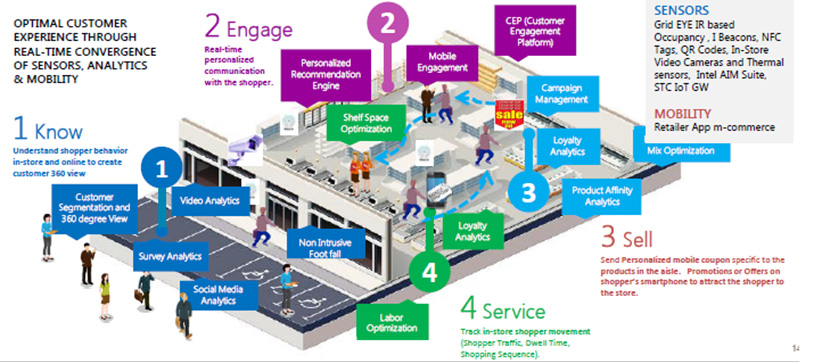The Internet of Things (IoT) is revolutionizing the way organizations do business. By connecting physical objects, such as machines and devices to the internet, businesses can collect real-time data that can be used to improve operations, customer service, and more. In this article, we take a look at how different organizations benefit from IoT by harnessing its potential for increased efficiency and cost savings.
From healthcare providers leveraging connected medical equipment in patient care delivery systems to manufacturers using sensors on production lines for predictive maintenance, organizations have adopted IoT devices with great success.
We will explore how different organizations benefit from IoT technology, security considerations when implementing it in their environment, and best practices for successful implementation. We will also look at various examples where companies have already seen tangible benefits from embracing an interconnected world.
Table of Contents
How Different Organizations Benefit from IoT
The different IoT advantages favor the needs of different industries and case uses. From improved productivity to other direct business benefits, let’s take a look at how different organizations benefit from IoT applications.
Manufacturing Industry
IoT benefits the manufacturing industry through its use in streamlining processes, increasing efficiency, and reducing costs. For example, sensors can be used to monitor machines for potential problems or detect when maintenance is needed.
This helps prevent downtime and keeps production running smoothly. Additionally, data collected from these sensors can be analyzed to improve product quality and optimize operations.
Healthcare Industry
The healthcare industry has been using IoT technology for a variety of applications such as patient monitoring, medical device tracking, and remote patient care. Connected devices can be used to track vital signs like heart rate or blood pressure in real-time so that doctors can quickly respond if there are any changes in the patient’s condition.
IoT technology is also being adopted by healthcare organizations as a way to improve patient care and streamline operations. Wearable devices such as fitness trackers can provide valuable data about a patient’s health that can be monitored remotely by medical professionals. In addition, medical equipment such as infusion pumps or ventilators can now be connected via Wi-Fi networks so they can send alerts if there are any problems with their operation or if they need servicing.
In addition, telemedicine solutions allow patients to access medical advice remotely without having to visit a doctor’s office in person.
Retail
Retailers have also been leveraging IoT technology for various purposes such as inventory management and customer engagement strategies. For example, retailers use RFID tags on products which allows them to keep track of their stock levels at all times with minimal effort required from staff members. Additionally, stores can collect data about customers through loyalty programs or digital signage which they then use for targeted marketing campaigns or personalized shopping experiences based on individual preferences.
Retailers have begun using IoT technology to understand customer preferences and behavior better to create more personalized shopping experiences for customers. For instance, retailers may use sensors placed around stores that detect which items customers pick up off shelves and how long they spend looking at them before making a purchase decision. This data allows retailers to make informed decisions about product placement within stores and tailor promotions accordingly based on customer interests.

(Source)
Manufacturing Industry
The manufacturing industry is one of the earliest adopters of IoT technology. It has been used to improve production efficiency, reduce downtime, and increase safety. For example, sensors can be used to monitor machinery performance in real-time and alert operators when maintenance or repairs are needed.
Additionally, RFID tags can be attached to products during the manufacturing process for tracking purposes throughout the supply chain.
Organizations across a variety of industries are taking advantage of the potential that IoT offers, from manufacturing to healthcare and retail. However, security considerations must be taken into account when implementing IoT solutions in any organization.
Security Considerations for IoT Implementation in Organizations
Organizations are increasingly turning to the Internet of Things (IoT) to help them streamline operations, understand customer preferences, and reduce costs. However, with this increased connectivity comes a heightened need for security measures.
IoT implementations require organizations to consider network security issues, data privacy concerns, and device vulnerabilities. Security is a vital part of maximizing how different organizations benefit from IoT implementations.
Network Security Issues
As more devices become connected through an organization’s IoT infrastructure, it becomes more difficult to protect against malicious actors who may try to gain access or disrupt operations. Organizations must ensure that their networks are properly secured by using firewalls and other security protocols such as encryption and authentication processes.
Additionally, they should monitor all traffic on their networks for suspicious activity to detect any potential threats quickly.
Data Privacy Concerns
With the proliferation of connected devices within an organization’s infrastructure comes the need for secure storage of sensitive data collected from those devices. Organizations must ensure that they have adequate safeguards in place such as encrypting stored data or limiting access only to authorized personnel to protect user information from unauthorized use or disclosure.
Organizations should implement policies regarding how long collected data is retained so that it does not remain accessible indefinitely after its purpose has been served.
Device Vulnerabilities
Connected devices can be vulnerable targets for hackers due to either hardware flaws or software bugs which could allow attackers access into a system if left unpatched or unprotected by anti-malware solutions. Organizations should regularly scan their networks for any known vulnerabilities so that they can take steps toward mitigating them before they become exploited by malicious actors looking for weaknesses in a system’s defenses.
In conclusion, implementing an IoT solution requires organizations to carefully consider network security issues, data privacy concerns, and device vulnerabilities to maintain the integrity of their systems while still taking advantage of the benefits offered by these technologies.
Best Practices for Implementing IoT in Organizations
Organizations that are looking to leverage the power of the Internet of Things (IoT) must first understand how to properly implement it. IoT can bring a variety of benefits, from automation and efficiency gains to improved customer satisfaction and a better supply chain.
To maximize how different organizations benefit from IoT, they should follow these best practices.
Develop an Effective Strategy
A well-thought-out strategy is essential for any successful IoT implementation. Organizations should identify their goals and objectives before beginning the process so they know what they want to achieve with their IoT solution.
They should also consider potential use cases and create a plan outlining how they will integrate the technology into existing systems or processes. This includes understanding which data needs to be collected, stored, analyzed, and shared to meet those goals.
Choose the Right Technology and Platforms
Organizations need to select technologies that fit their specific needs as well as platforms that can securely store data while providing easy access for users who need it. Organizations should research different vendors to find one that offers reliable products at competitive prices along with good customer service support if needed down the line.
Additionally, organizations should look into open-source solutions where available since these often provide more flexibility than proprietary solutions.
Ensure Proper Security Measures
As mentioned earlier, security is a primary concern when implementing an IoT system due to its ability to collect large amounts of sensitive data about customers or operations within an organization’s network infrastructure.
Organizations must take steps such as encrypting all communications between devices, using secure authentication protocols, deploying firewalls, monitoring networks regularly, and training employees on proper cybersecurity measures. These steps will help protect against malicious actors attempting unauthorized access or cyberattacks.
Conclusion
IoT has the potential to revolutionize how different organizations operate and benefit from its use. By leveraging data collected through connected devices, businesses can make better decisions, improve efficiency, reduce costs, and increase customer satisfaction. A well-prepared implementation is how different organizations benefit from IoT.
However, organizations need to consider security when implementing IoT solutions to ensure that their data remains safe and secure. With careful planning and implementation of best practices for using IoT technology within an organization’s infrastructure, different organizations can reap the rewards of this powerful technology.





